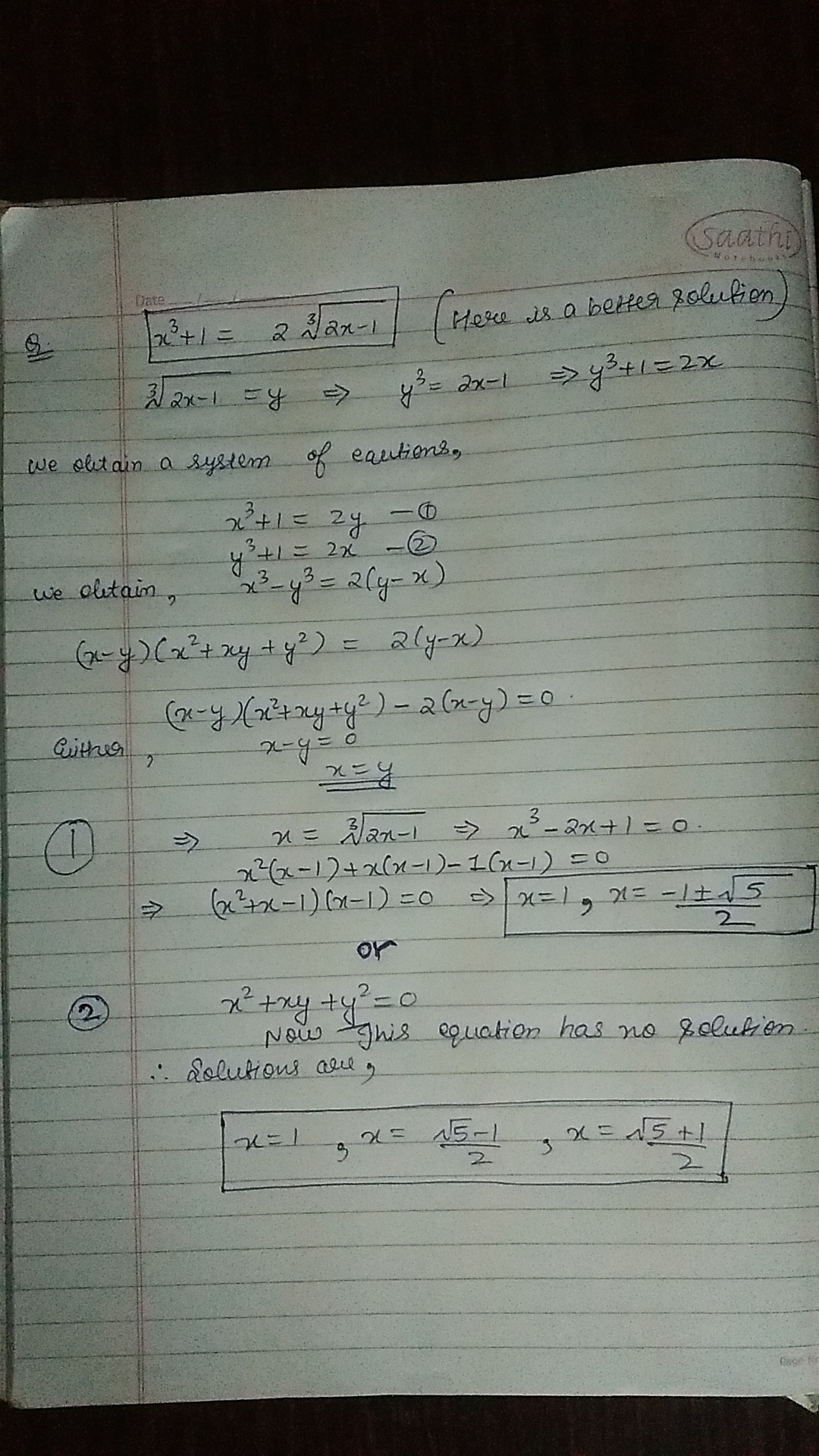An algebra problem by Raghav Rathi
Find the solution set of x satisfying x 3 + 1 = 2 3 2 x − 1 .
This section requires Javascript.
You are seeing this because something didn't load right. We suggest you, (a) try
refreshing the page, (b) enabling javascript if it is disabled on your browser and,
finally, (c)
loading the
non-javascript version of this page
. We're sorry about the hassle.
2 solutions
Moderator note:
You are almost correct. Note that you have found 3 values of x , namely x = 1 , 2 5 ± 1 . However, you should always check if all of these roots satisfy the given equation. In this case, x = 2 5 + 1 is an extraneous root.
It is an essential step to obtaining the correct solution, such as when working with radical equations or completing the square to solve a problem, which may result in an extraneous root.
Sorry I forgot!!:p

The equation is equivalent to 2 x 3 + 1 = 3 2 x − 1 . Let f ( x ) = 2 x 3 + 1 , then the inverse function f − 1 ( x ) exists, and is equal to 3 2 x − 1 . Hence, our equation in question can be written as f ( x ) = f − 1 ( x ) .
Since a function f is equal to its inverse, then the solution (if any) occurs at the intersection point(s) between the function f and the straight line y = x . Thus, we just need to solve for f ( x ) = x ⇔ 2 x 3 + 1 = x ⇔ x 3 − 2 x + 1 = 0 .
By rational root theorem , we can see that x = 1 is a solution. Factoing out this linear factor gives ( x − 1 ) ( x 2 + x − 1 ) = 0 . What remains to solve is the quadratic equation, applying the quadratic formula gives the other two roots, namely, x = 2 5 ± 1 . However, upon inspection, we see that x = 2 5 + 1 does not satisfy the original equation. Hence, the solution set to the equation in question is { 1 , 2 5 − 1 } .
Footnote : Note that f − 1 ( x ) exists because f ( x ) is a one-to-one function.